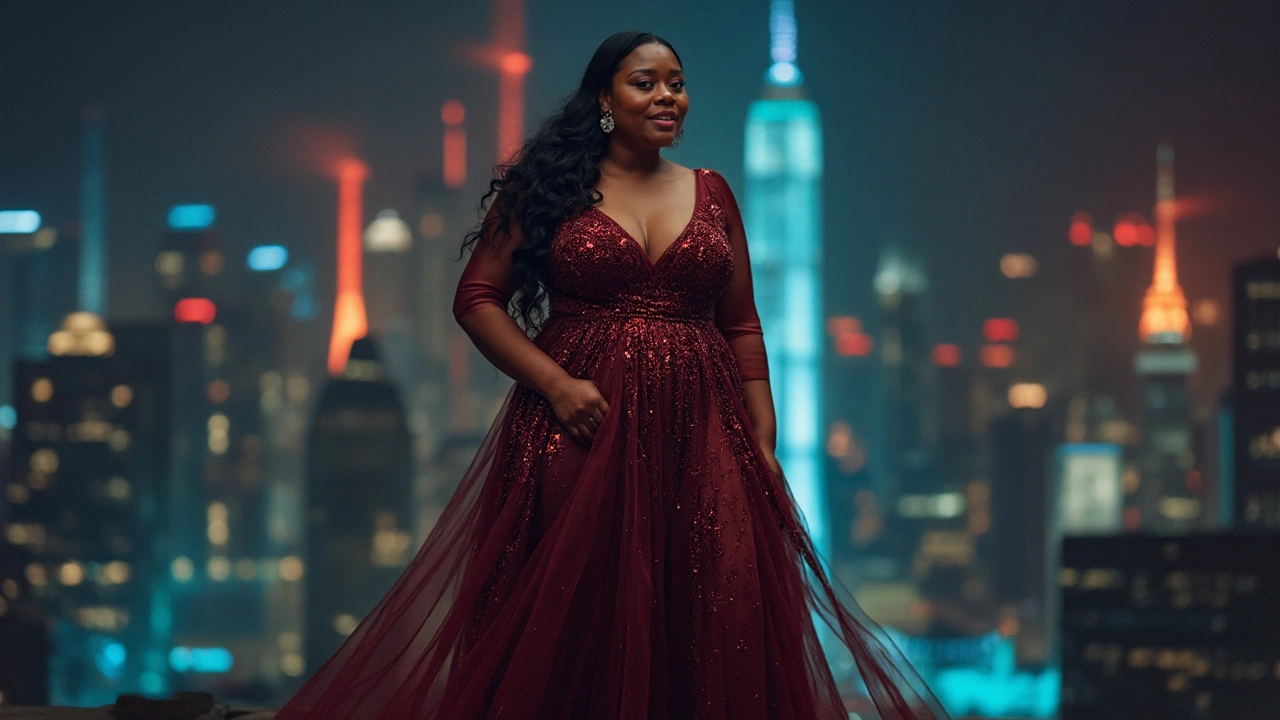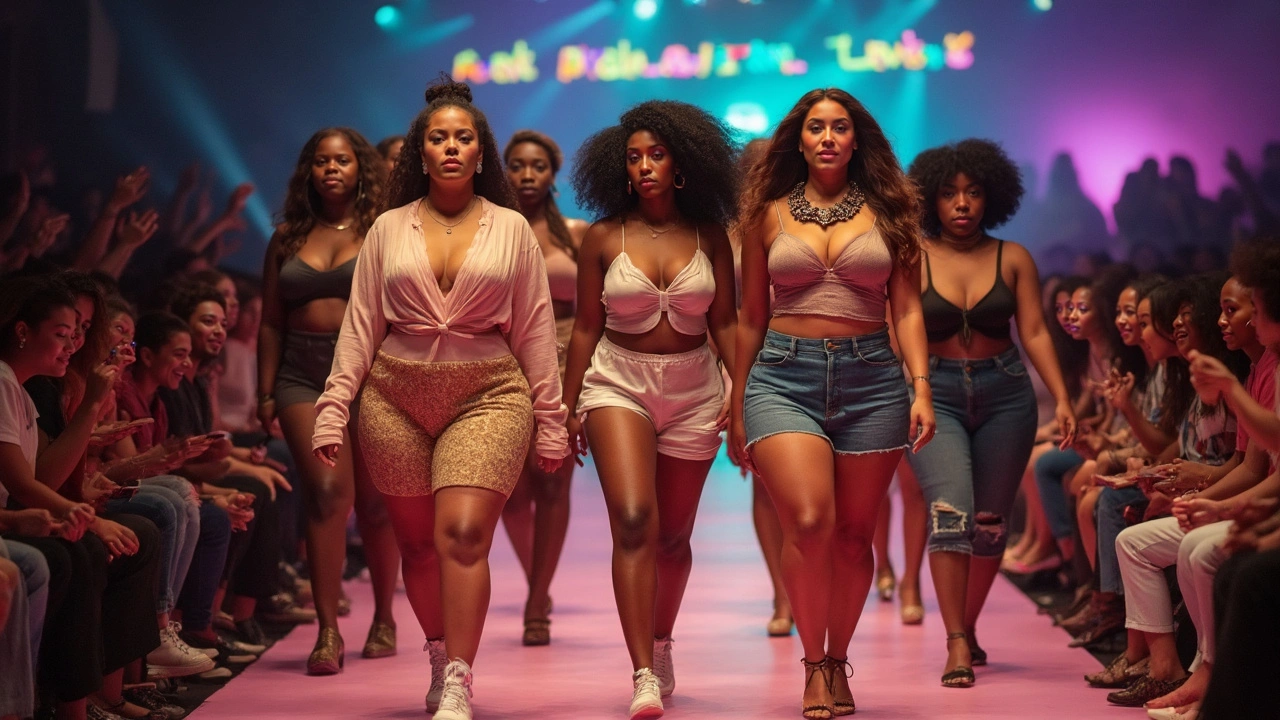Ever looked around a fashion show and thought, 'Hey, that's what real people look like!'? That's no accident. Curvy models are making waves and changing the landscape of an industry notorious for its rigid ideals. It's all about embracing every shape and turning fashion into a welcoming space for everyone.
Curvy models aren’t just filling a quota. They're spearheading a movement that says 'all bodies are beautiful,' and their presence is challenging outdated norms. It's high time the runway mirrored reality, don’t you think?
The fashion industry used to be about exclusivity. Now, it's pivoting towards diversity with curvy models leading the charge. This shift isn't just changing who we see in magazines but also what style means to us. With each diverse silhouette gracing billboards, there’s a stronger sense of representation—and let’s be honest, that feels pretty darn great.
- The Rise of Curvy Models
- Breaking Stereotypes and Embracing Diversity
- Impact on Fashion and Consumer Choices
- Future of Inclusivity in Modeling
The Rise of Curvy Models
It's no secret that the fashion world has been undergoing a massive shake-up. One of the most exciting changes is the emergence of curvy models as major figures in the industry. We're seeing these stunning figures strutting down runways and gracing magazine covers like never before.
The evolution started gaining steam around 2015, thanks in part to the efforts of pioneers like Ashley Graham and Tess Holliday, who proved that beauty isn’t confined to a single size. Their success motivated other plus-size fashion icons to enter the spotlight, and soon enough, brands began paying attention.
Fast forward to today, and brands are not just embracing body positivity—they're celebrating it. Big names like Nike and Savage X Fenty have made inclusivity a core part of their brand identity. They realize that fashion consumers want to see themselves represented, and they responded by using diverse models to promote their lines.
Recently, some stats suggest that the global plus-size clothing market is projected to reach over $200 billion by 2025. This surge has opened doors for curvy models, giving them unprecedented opportunities to showcase their talents and redefine industry standards.
Why the sudden spotlight on model diversity? Consumers are demanding it. Social media platforms have amplified voices calling for change, and modeling agencies are listening. In fact, several agencies have dedicated divisions for representing these beautiful, curvier models, ensuring they receive the recognition they deserve.
Ultimately, the prominence of curvy models isn’t just a trend—it's a movement. It challenges outdated beauty norms and encourages everyone to embrace their natural shape. As this movement gains momentum, we're witnessing a much-needed shift towards a more inclusive and representative fashion industry.
Breaking Stereotypes and Embracing Diversity
For years, the fashion world seemed stuck on one idea of beauty. Think tall, slim, and not much else. But that's changing, and it’s about time! Curvy models are stepping onto the scene, smashing those outdated norms to bits and making room for diversity that reflects the real world.
So, what’s the big deal? Well, having plus-size fashion represented in high-profile campaigns and runway shows is a win for everyone. It showcases the idea that beauty comes in all forms and sizes. Brands like Aerie and Lane Bryant aren’t just dipping their toes in they’re fully committed. They're proving that clothing for diverse body types isn’t just a trend; it's a much-needed evolution.
A cool fact: In 2022, a study showed that 70% of women in the U.S. are classified as plus-size, yet for years, they were barely represented. Imagine the impact of seeing someone who looks like you, rocking a killer outfit in a mainstream ad! That’s what’s happening now, and it’s changing the game for how we view fashion and ourselves.
What's really neat is how this shift towards inclusivity is influencing consumer choices. More people are flocking to brands that champion diversity, proving that real, relatable representation matters. This isn't just about fashion; it's about challenging stereotypes that have persisted for too long and embracing every unique shape and size.
Dive into popular social media spaces, and you'll see young influencers using their platforms to further this message. Hashtags like #BodyPositivity and #CurvyFashion are trending not because they're buzzwords, but because they resonate with a global audience hungry for authenticity.
This movement is not just reshaping the runway; it’s making the broader cultural statement that fashion should be inclusive. It’s saying it's okay to be you, just as you are. And that’s a powerful message, isn’t it?

Impact on Fashion and Consumer Choices
The rise of curvy models is seriously shaking up the fashion industry, and it's not just a trend—it's a shift in perspective. Consumers are fed up with seeing the same type of body portrayed as the only beauty standard. They're hungry for diversity, and fashion brands are starting to get the memo.
Remember when finding stylish clothes for a curvy figure felt like hunting for a needle in a haystack? Now, more brands are making a conscious effort to be inclusive in their sizing, offering everything from trendy plus-size lines to curvier mannequins in stores. According to Business of Fashion, the global plus-size fashion market is estimated to grow to $696.71 billion by 2027. That's some serious growth.
The fashion world wasn't always like this. Social media platforms have played a huge role by giving a voice to those promoting body positivity. These platforms have become the stage where curvy models can shine, influencing fashion looks and driving change.
"Inclusivity is not a trend, it's a demand for a better future," says Ashley Graham, a well-known name in the world of curvy models. Her words echo the sentiment widely shared in the industry today.
It's clear we’re moving towards a future where curated fashion isn’t size-exclusive, and this shift benefits everyone. By choosing brands that support diverse sizes, consumers are steering the market in a new direction. More variety in clothing styles means everyone can find something that makes them feel fantastic.
| Aspect | 2015 | 2025 |
|---|---|---|
| Plus-size fashion market size (in billion USD) | 200 | Estimated 696.71 |
| Average number of plus-size lines per brand | 1-2 | 3-5 |
The benefits of embracing diversity in fashion are clear, not just for wearers, but also for brands that recognize the power of authentic representation. It's a win-win as fashion becomes more about personal expression and less about conforming to narrow standards.
Future of Inclusivity in Modeling
The future of modeling is looking a lot more colorful and diverse, echoing the real world we live in. Curvy models are at the forefront of this revolution, giving fashion a new definition by embracing body positivity and inclusivity. Industries are realizing that curvy models aren't a mere trend—they're becoming an essential part of reshaping the fashion landscape.
We’re seeing big brands dedicating campaigns solely to plus-size fashion, not treating it as a side act. They understand there's a market that's been neglected and are now scrambling to catch up. Talk about a win-win for both businesses and body diversity! Clothing lines are expanding their size range to ensure everyone can find something that fits and flatters. In fact, data from last year showed a 21% increase in sales within brands that embraced inclusive sizing.
The change isn’t just happening on the racks—runways are evolving too. Prestigious fashion weeks globally are featuring plus-size models alongside more traditional figures. This isn't just good for inclusivity; it's good for creativity. Designers are being challenged to think beyond the 'one-size-fits-all' approach, pushing the boundaries of style and innovation.
Looking ahead, technology's role can't be ignored. Virtual modeling and online platforms are providing more accessible avenues for diverse talents. More doors are opening for curvy models through social media, where they can bypass traditional agents and directly connect with brands that value inclusivity.
Here’s a peek into what’s driving this exciting change:
- Growing Demand: Shoppers are vocal about wanting to see themselves reflected in fashion campaigns.
- Social Media Influence: Platforms like Instagram and TikTok are empowering individuals to showcase their style and personality, driving demand for varied representation.
- Brand Responsibility: Companies are realizing the importance of socially and culturally responsible branding.
The journey towards complete inclusivity isn't over, but the wheels are definitely in motion. Who knows? In the near future, talking about inclusivity could be as outdated as old stereotypes once were.





